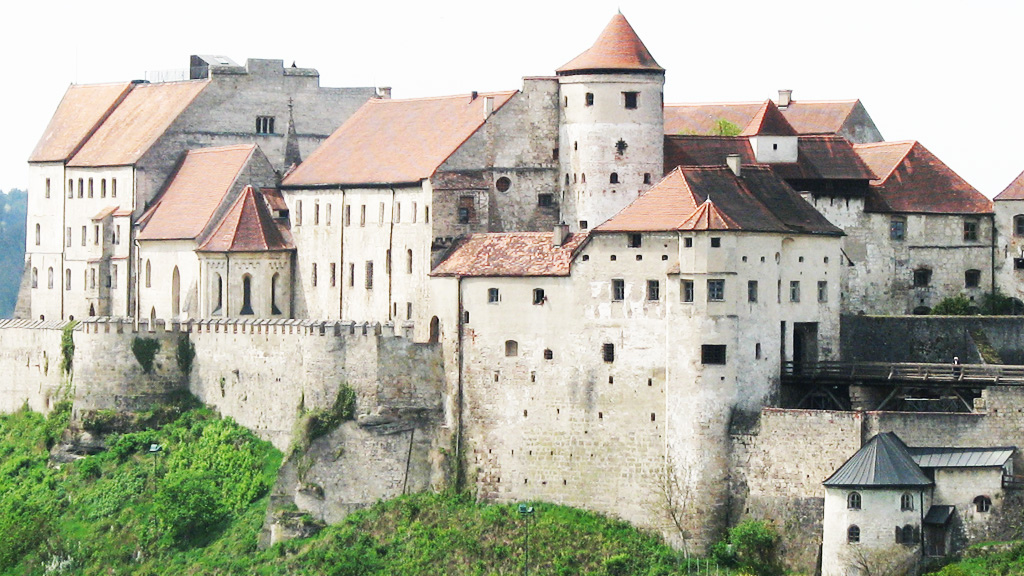Bavaria, a region in Germany, is well known for its wide variety of castles and palaces. Castles have been built in Bavaria since the Middle Ages for a number of different reasons. Munich is the centerpiece of Bavaria, but there are plenty of cultural enclaves throughout the state. If you’re looking to take a student group to Bavaria to view the majestic castles, then you may not know where to start. With so many castles to choose from, it can be difficult to narrow down your choices. Here are the best castles for your student group:
1. Neuschwanstein Castle
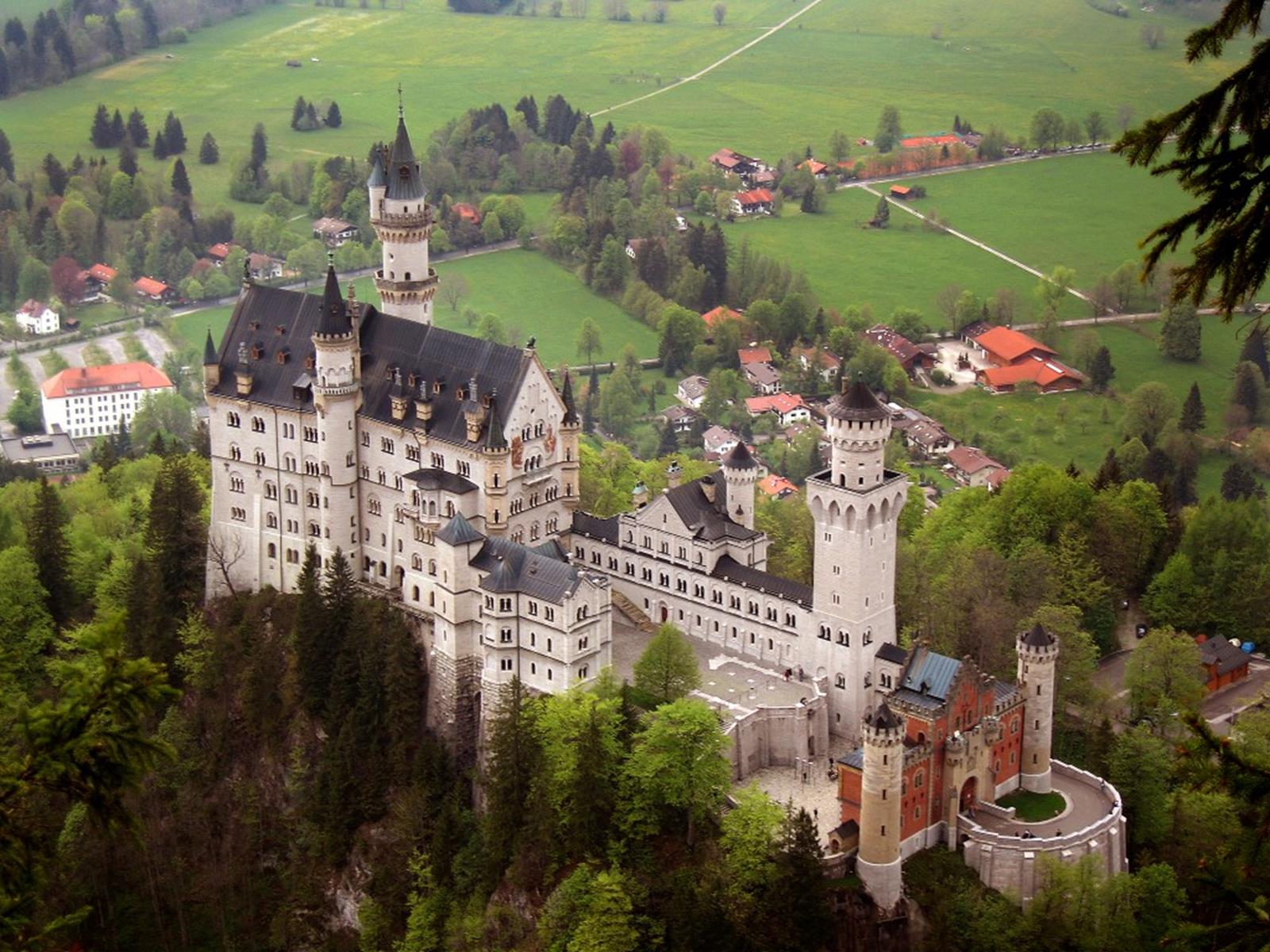
Neuschwanstein Castle. Credit
Neuschwanstein Castle is easily one of the most popular castles in Germany. It is often described as a “fantasy castle” if only because of its similarities to some fictional palaces. Indeed, Sleeping Beauty’s Castle in Disneyland was actually based on Neuschwanstein Castle. The castle was constructed in the 19th century (finished in 1892) by King Ludwig II. It was meant to be an homage to famous German composer, Richard Wagner. It is located in the alpine hills above the village of Schwangau. In the Middle Ages, castles stood near the site of the Neuschwanstein Castle, but, by the time of King Ludwig II’s reign, these castles were nothing but ruins.
Today, the castle regularly sees around 1.3 million tourists per year. It’s not uncommon for 6,000 people to tour the castle in a single day. The village of Schwangau provides plenty of opportunities for lodging, sightseeing and experiencing local culture. There are two ways to get to the castle from the village: horse-drawn carriage or bus. Obviously, the horse-drawn carriage gives you a real 19th century aesthetic, even if the bus might be faster. In any event, you get to see one of the most impressive castles in Europe. For more information, visit the official website for Neuschwanstein Castle.
2. Prunn Castle
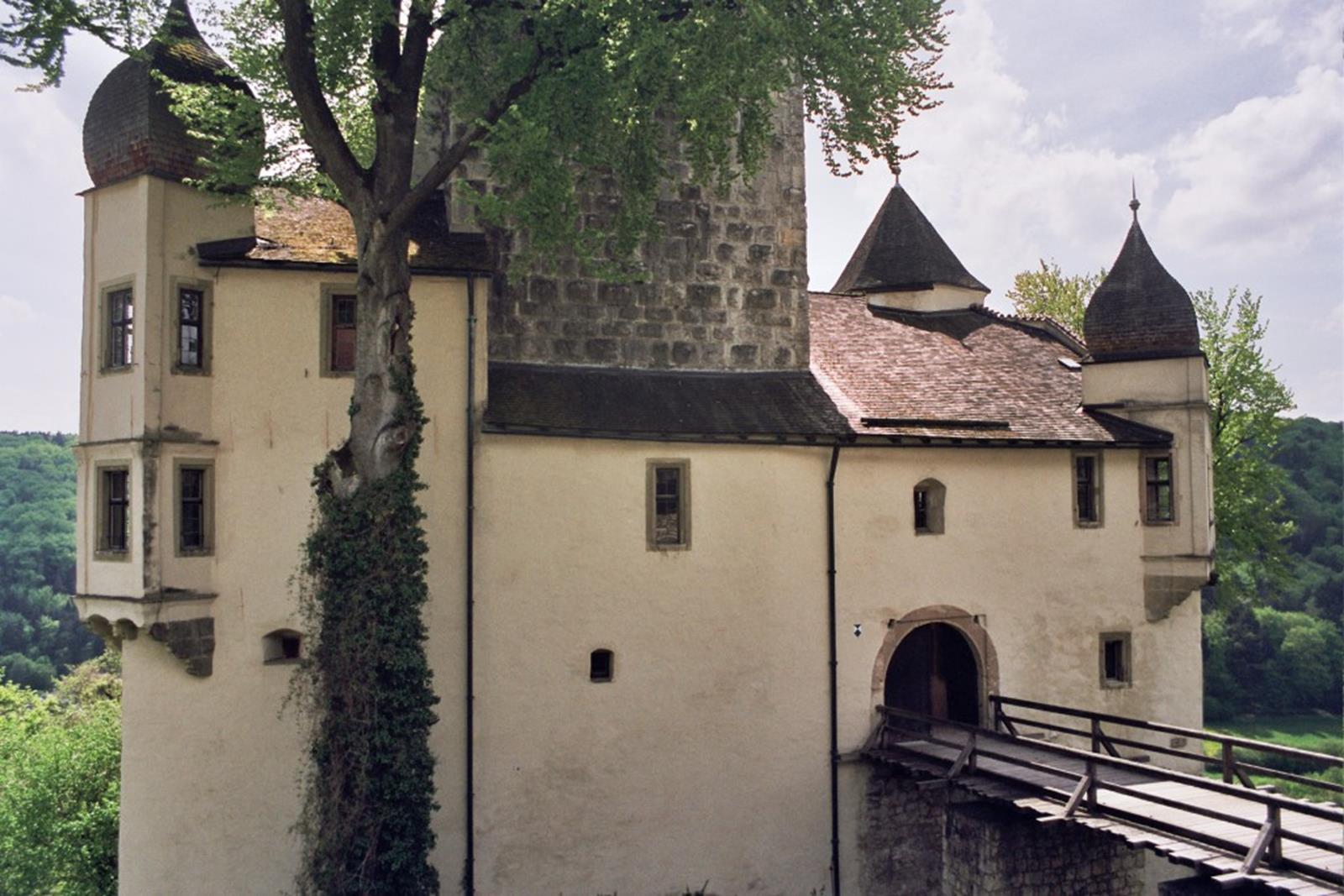
Prunn Castle. Credit
Located near Regensburg in Bavaria, Prunn Castle is certainly a sight to behold. Nestled on an almost vertical rock face, the castle has stood since around 1200. It overlooks the Altmühl River and is shrouded in the dense foliage of the Bavarian Forest. The Lords of Prunn-Laaber first took residence in the castle in the 13th century before giving up the land to Duke Ludwig of Bavaria. One of the most interesting sites at the castle is the enormous keep that is also the oldest part of the castle. In the 16th century, a manuscript called the Nibelungenlied was found at the castle. The manuscript is one of the most complete surviving copies of a Middle High German heroic epic.
Prunn Castle is located near Regensburg, which is a unique Bavarian locale in its own right. There are plenty of accommodations in Regensburg, and you can experience other forms of medieval architecture in the town. You can find more info at the official website.
3. Burghausen Castle
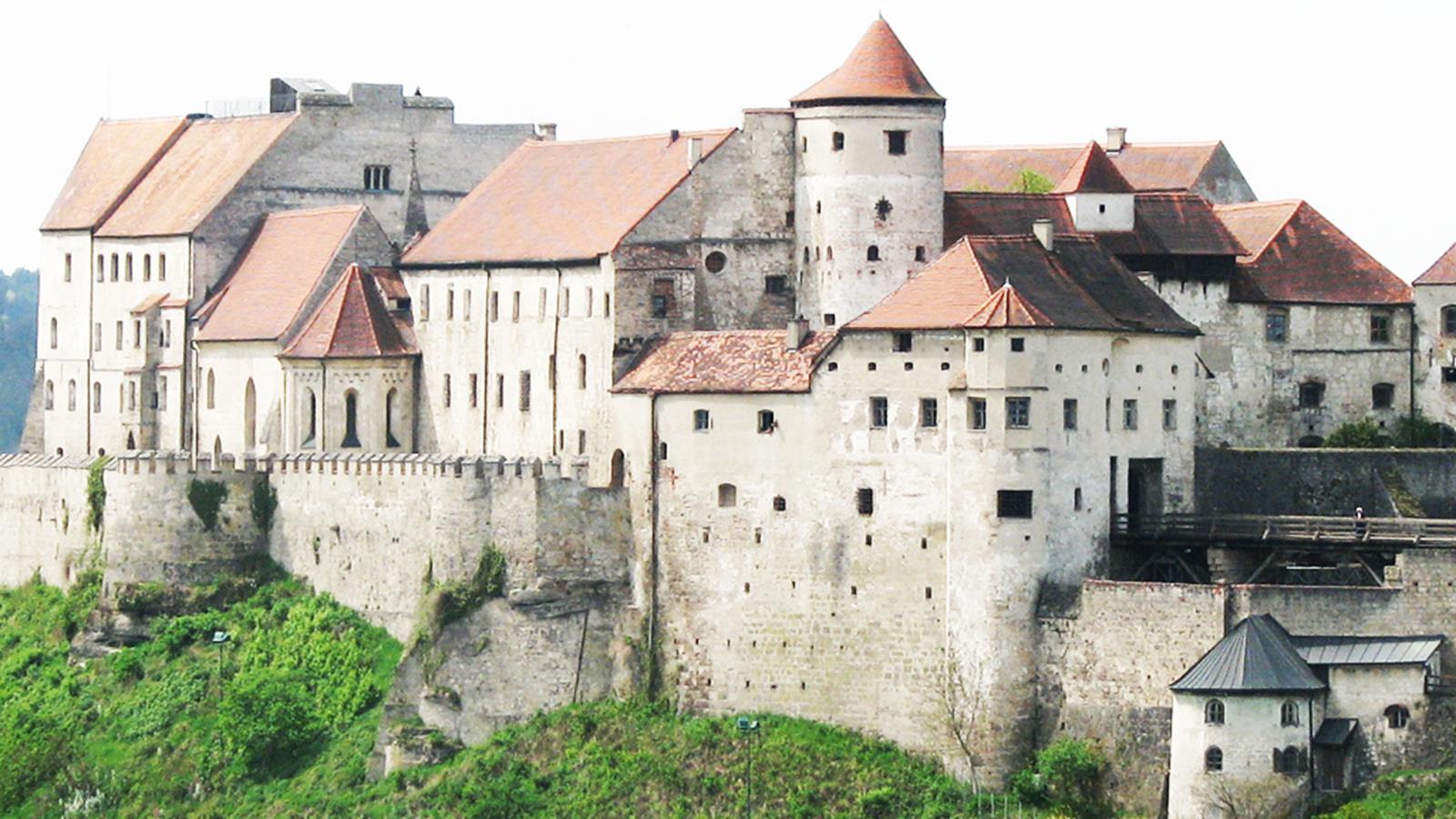
Burghausen Castle. Credit
Burghausen Castle is one of the longest and largest castles in Europe and throughout the world. The castle itself was founded nearly 1,000 years ago in 1025. The lower dukes of Bavaria took residence in the castle in 1255, at which point construction really started to ramp up. Most of the medieval fortifications are still standing today, and the complex features six courtyards, a Great Hall and a large collection of panel paintings from the Late Gothic era in the State Gallery.
The castle currently sits in the town of Burghausen, across the Salzach River from Austria. You can stand atop the castle and see the medieval beauty of the town and the adjacent river. There are many options in the town of Burghausen for lodging. For information, visit the official website of the Burghausen Castle.
4. Imperial Castle of Nuremberg
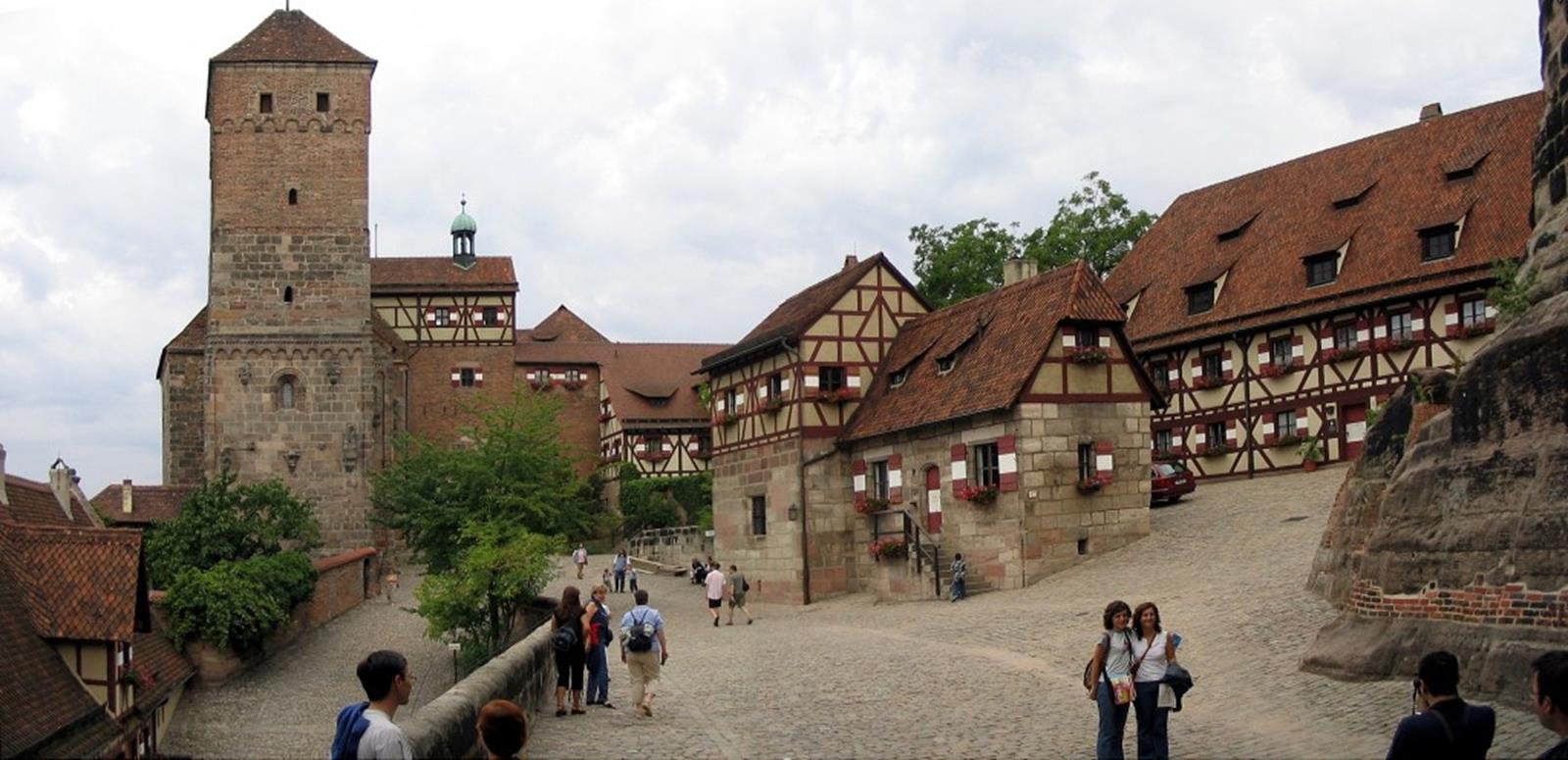
Imperial Castle of Nuremberg. Credit
This majestic castle was once an important fixture in the Holy Roman Empire. Constructed with sandstone, the Imperial Castle of Nuremberg dates back to around 1105, although it may have existed for 100 years prior to that. The imperial chapel section of the castle is one of the oldest surviving elements, dating back to around 1200. The castle and the city walls of Nuremberg were designed as defensive elements to keep the medieval city of Nuremberg fortified. There are still several towers in the castle that were meant to provide a lookout for city guards.
You can go up into the castle’s towers and take in the expansive view of modern Nuremberg. There are plenty of historical sights to see in Nuremburg after you’ve finished with the Imperial Castle. For more information, visit the castle’s official website.
5. Lauenstein Castle
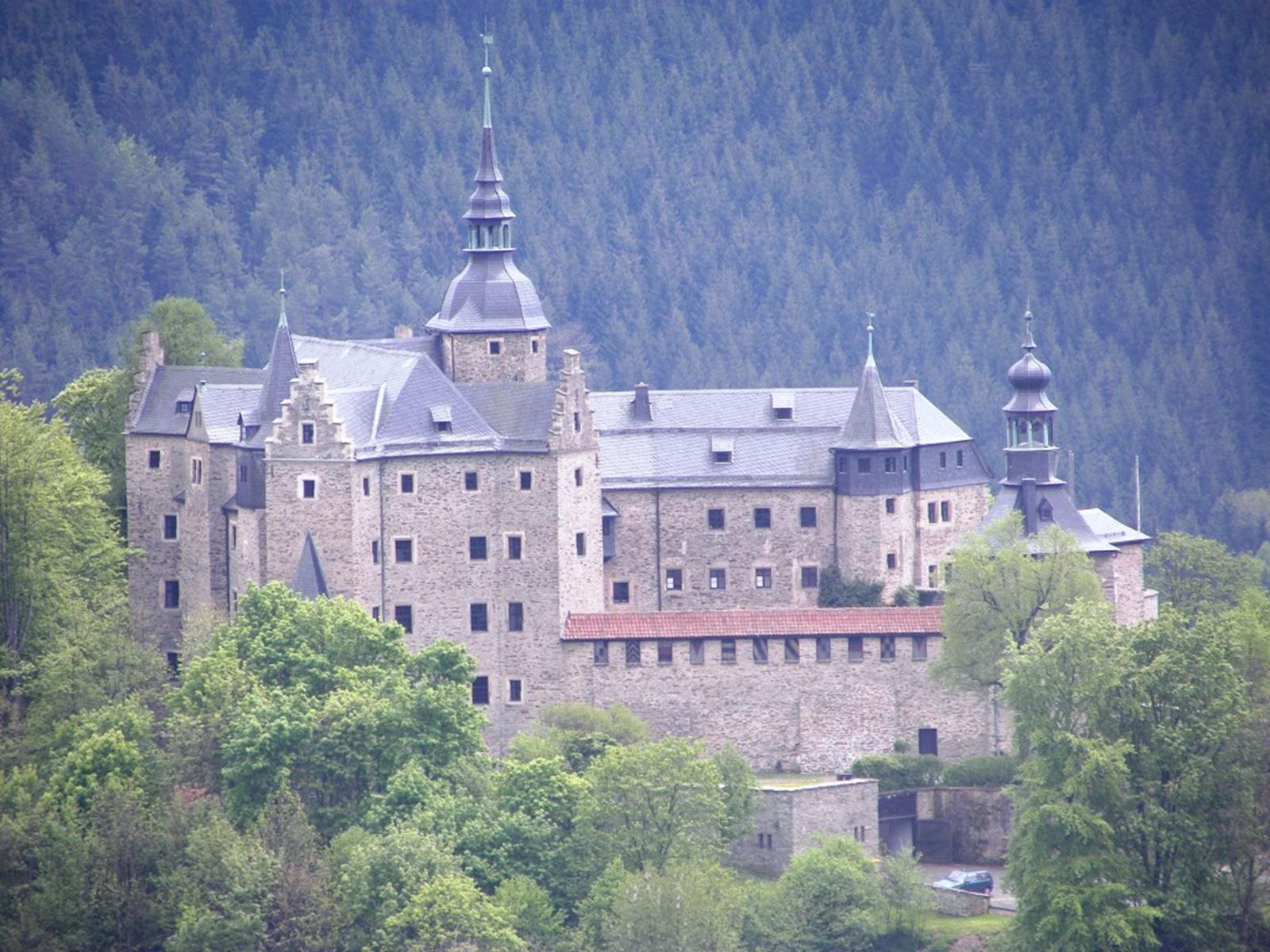
Lauenstein. Credit
Located on a hill near the town of Ludwigsstadt, Lauenstein Castle is certainly a fascinating and striking structure. Many of the oldest architectural elements on the castle date as far back as 1200. From 1551 to 1554, the Lord of Thyna built a masterful Renaissance Palace that still stands today. The building fell into neglect for many years, but was privately restored in 1896 before being sold to the Bavarian Palace Department in 1962.
The Palace Department turned the castle into a museum of sorts that displays weapons, armor, musical instruments, keys and other items from a bygone era. For more information, visit the official website.
Other Considerations
Contrary to popular belief, Bavarians certainly aren’t excessive beer drinkers and sausage consumers. That stereotype has been perpetuated by the media, but the region is actually quite conservative. More than 60% of Bavarians are practicing Catholics, and the majority of the beer-drinking culture occurs in rural areas and throughout the southern and eastern sections of the state. So, don’t travel to Bavaria expecting a nonstop party atmosphere.
It’s also important to understand that Bavarians are fiercely proud of their heritage. Many residents might even consider themselves Bavarians before Germans. Bavaria is one of the most autonomous states within Germany. It’s probably a good idea to avoid disparaging remarks about Bavarians. It may also be advantageous to avoid comparing Germans and Bavarians.

